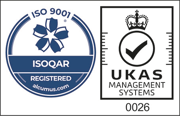Extrusion-spheronization is a cornerstone technique in pharmaceutical manufacturing, transforming drug substances and excipients into uniform, spherical granules (sometimes called pellets, spheroids or beads).
These granules offer numerous advantages over traditional tablets, including improved flowability, content uniformity, and controlled drug release. However, beneath the surface of this seemingly straightforward process lies a fascinating interplay of physical phenomena at the molecular level: adsorption and absorption. These forces, though often unseen, play a critical role in the success of extrusion-spheronization.
Adsorption: The Glue that Binds
Imagine mixing a bowl of ingredients to form a dough. In extrusion-spheronization, the drug particles act as the flour, while the binders function as the glue that holds everything together. However, unlike traditional glues, binders achieve their adhesion through a process called adsorption. Adsorption describes the accumulation of molecules from one substance (adsorbate, usually a binder) on the surface of another substance (adsorbent, typically drug particles) without penetrating it.
In this context, binders like hydroxypropyl cellulose (HPC) or povidone (PVP) readily adhere to the drug particle surface through adsorption. This creates a strong adhesive bond, allowing the particles to stick together during the extrusion process.

Several factors influence the extent of adsorption, these are:
Surface Area: Drugs with larger surface areas provide more "dance floor" for the binder molecules to adhere, leading to stronger binding.
Binder Chemistry: Different binders have varying affinities for drug surfaces. Selecting the right binder with optimal adsorption properties ensures robust extrudates.
Processing Conditions: Factors like moisture content and mixing intensity can influence how well the binder spreads and adsorbs onto the drug particles.
Beyond mere adhesion, adsorption offers additional benefits, such as:
Improved Wettability: The binder layer can attract moisture, making the drug particles more water-loving. This is crucial for even distribution of water during the subsequent spheronization step.
Controlled Drug Release: Depending on the binder's properties, the adsorbed layer can regulate how quickly the drug dissolves from the final tablet. For example, binders with high water solubility can create a more porous structure, promoting faster drug release.
Absorption: A Subtle But Crucial Player
While adsorption focuses on surface interactions, absorption deals with the penetration of a substance into the bulk of another. In extrusion-spheronization, true absorption doesn't play a major role in the actual mixing process. However, some excipients used during the process exhibit swelling properties upon contact with water.
Here's how this subtle absorption can be beneficial:
Enhanced Spheronization: Certain fillers or disintegrants, like starch or pregelatinized starch, can absorb moisture and slightly swell. This swelling can aid in creating stronger, more spherical granules during the spheronization process. The slight expansion helps fill voids within the extrudate, promoting the formation of well-defined spheres.
Porosity Control: The swelling behaviour of some excipients can influence the porosity (number of tiny holes) within the final spheres. This porosity, in turn, affects the drug release rate from the tablets. By carefully selecting excipients with controlled swelling properties, formulators can design tablets with desired disintegration and dissolution profiles.
The Delicate Dance: A Symphony of Forces
Adsorption and absorption, although distinct processes, work together to influence the success of extrusion-spheronization in a delicate dance:
Binder Selection: The type and amount of binder used directly impacts the extent of adsorption and, consequently, the binding strength and wettability of the extrudate. Choosing a binder with high affinity for the drug particles and controlled water solubility helps achieve optimal results.
Moisture Control: The presence of moisture is essential for both binder adsorption and excipient swelling. However, too much moisture can lead to sticking issues during extrusion. Finding the optimal moisture balance is crucial for achieving strong, well-defined spheres.
Processing Parameters: Mixing speed, temperature, and extrusion pressure can all influence how well the binder interacts with the drug particles and how efficiently moisture distributes throughout the mix. Adjusting these parameters optimises the formation of a homogenous extrudate.
Beyond the Basics: A Look at the Downstream Impact
The impact of adsorption and absorption extends beyond the immediate extrusion-spheronization process. The quality of the resulting spheres directly affects the final tablet characteristics:
Content Uniformity: Good adhesion due to optimal adsorption ensures even distribution of drug particles throughout the extrudate. This translates to consistent drug content in each tablet, ensuring consistent therapeutic effect.
Disintegration and Dissolution: The interplay of binder selection, excipient swelling, and porosity control influences how quickly the tablets break apart and release the drug in the body. By adjusting these factors, formulators can design tablets with desired disintegration times, allowing for immediate or controlled release profiles.
Flowability: Uniform, spherical granules flow more freely compared to irregular shapes. This improved flowability simplifies handling during subsequent manufacturing steps like tableting, minimizing processing issues and ensuring efficient production.
The Unsung Heroes Take a Bow
Extrusion-spheronization may appear to be a simple mixing process, but it's a carefully orchestrated performance where adsorption and absorption play critical, though often unseen, roles. By understanding the interplay between these forces, formulators can optimise the selection of binders, excipients, and processing parameters. This optimisation leads to the creation of robust, uniform spheres that translate into high-quality tablets with desirable characteristics.
In essence, adsorption and absorption act as the unsung heroes of extrusion-spheronization, ensuring the consistent delivery of medications and ultimately, improving patient outcomes.

The Road Ahead: Further Exploration
The world of adsorption and absorption in extrusion-spheronization is constantly evolving. Ongoing research focuses on:
Developing novel binders: Scientists are exploring new binder materials with superior adhesion properties, controlled water solubility, and minimal interactions with drug stability.
Understanding the complex interplay: Advanced analytical techniques are being employed to gain a deeper understanding of how adsorption and absorption interact with other process variables at the molecular level.
Predictive modelling: By creating mathematical models that incorporate the effects of adsorption and absorption, researchers aim to predict the behaviour of different excipients and optimise formulations for specific drug delivery requirements.
By continuing to explore these avenues, we can further unlock the potential of adsorption and absorption, elevating extrusion-spheronization to even greater heights as a valuable tool in the pharmaceutical industry. As this field progresses, these unsung heroes will continue to play a pivotal role in ensuring the quality and efficacy of medications for generations to come.
Discover Caleva's Range of Bench-Top Extruder-Spheronizers
Caleva offer a range of lab-scale mixers, extruders and spheronizers for making extrudate and pellets in your laboratory or teaching facility.



Leave A Comment